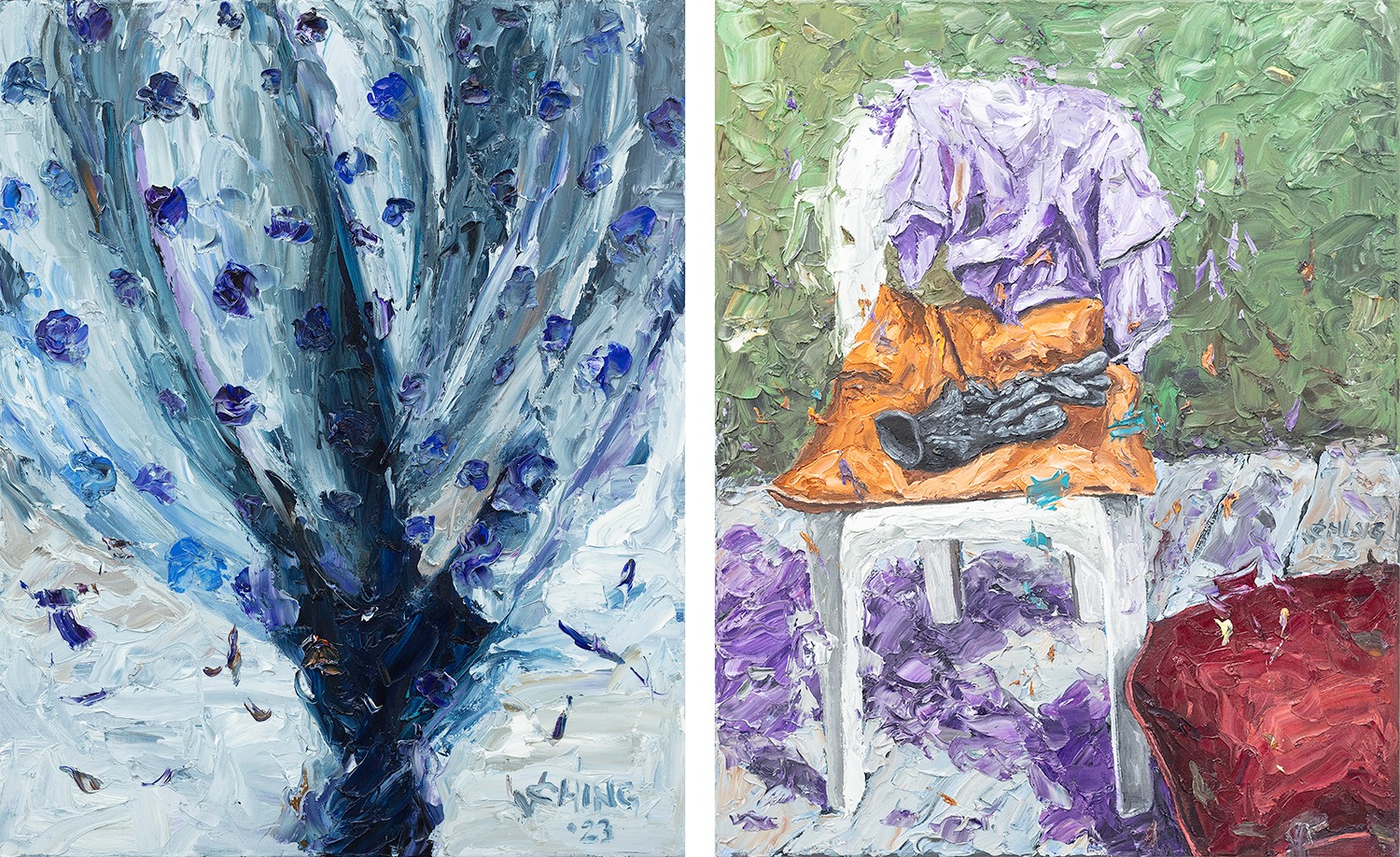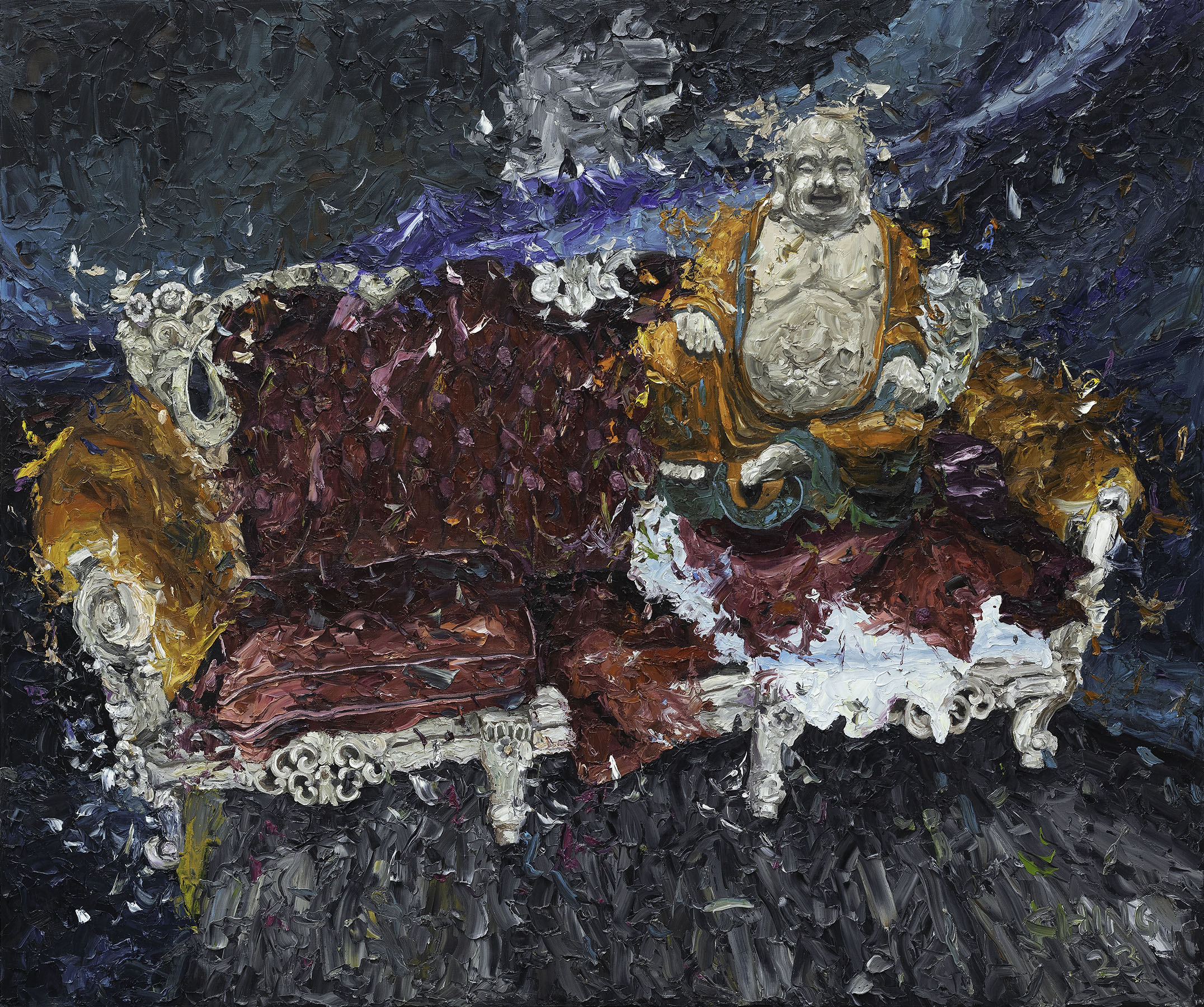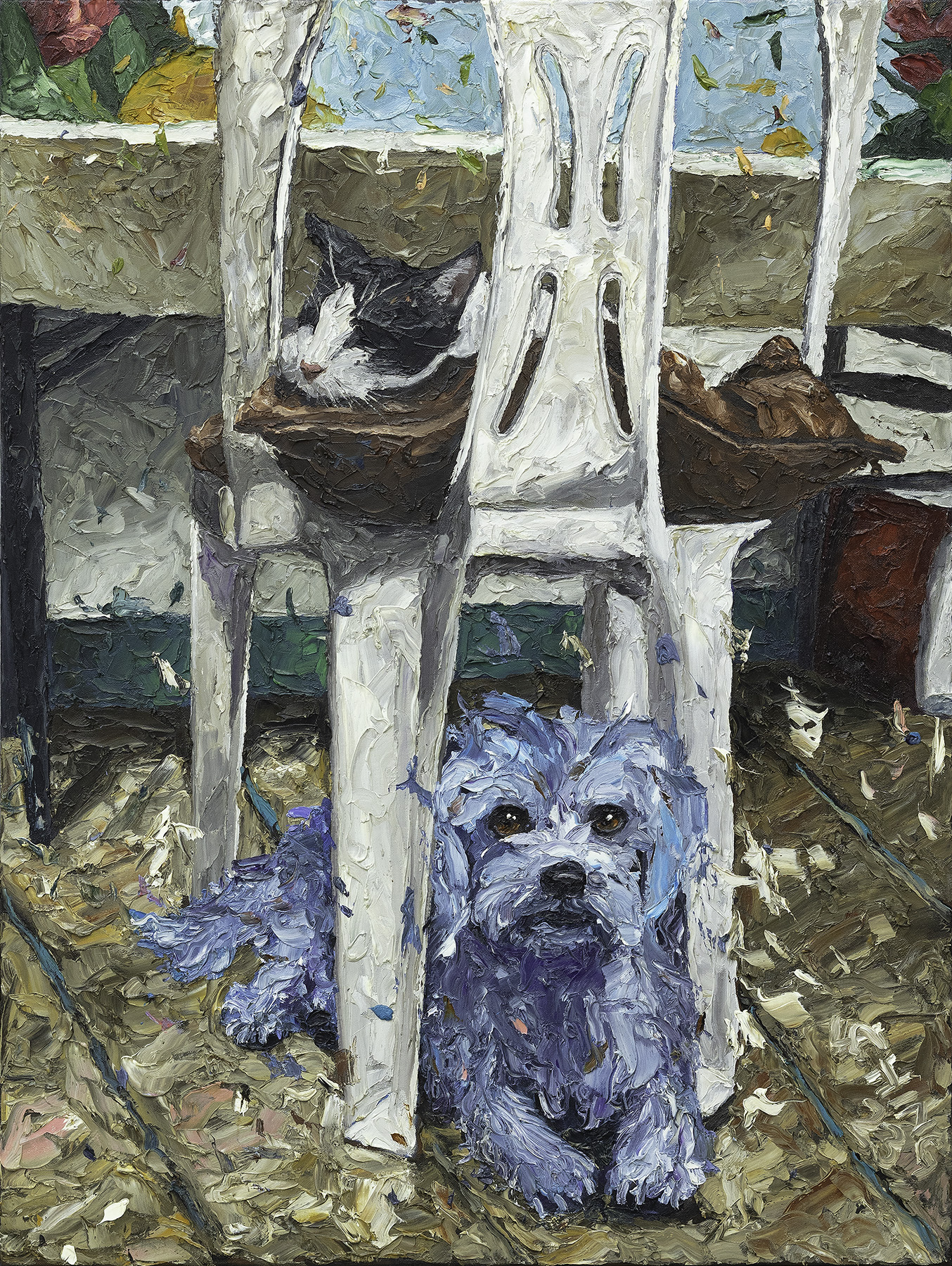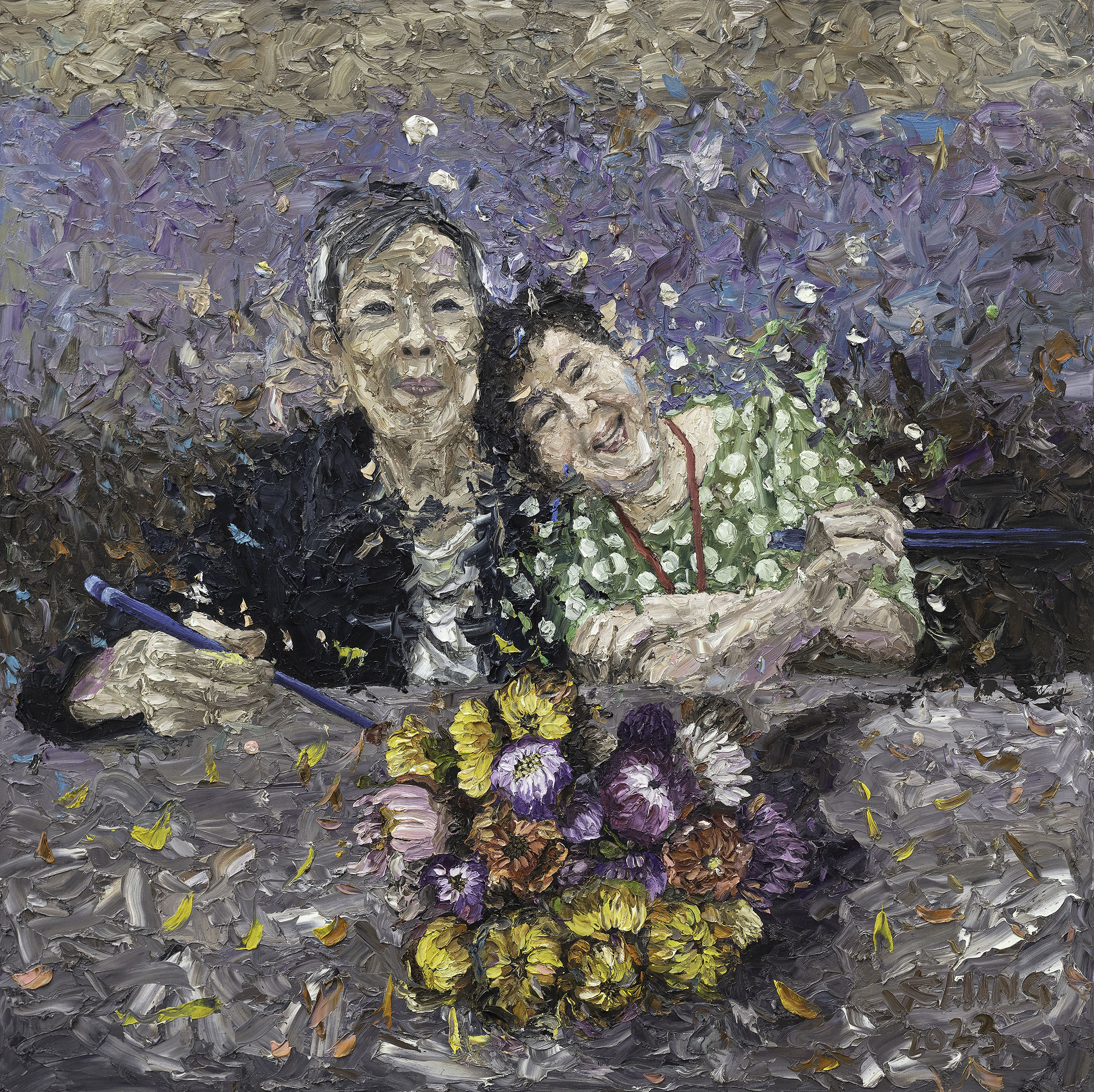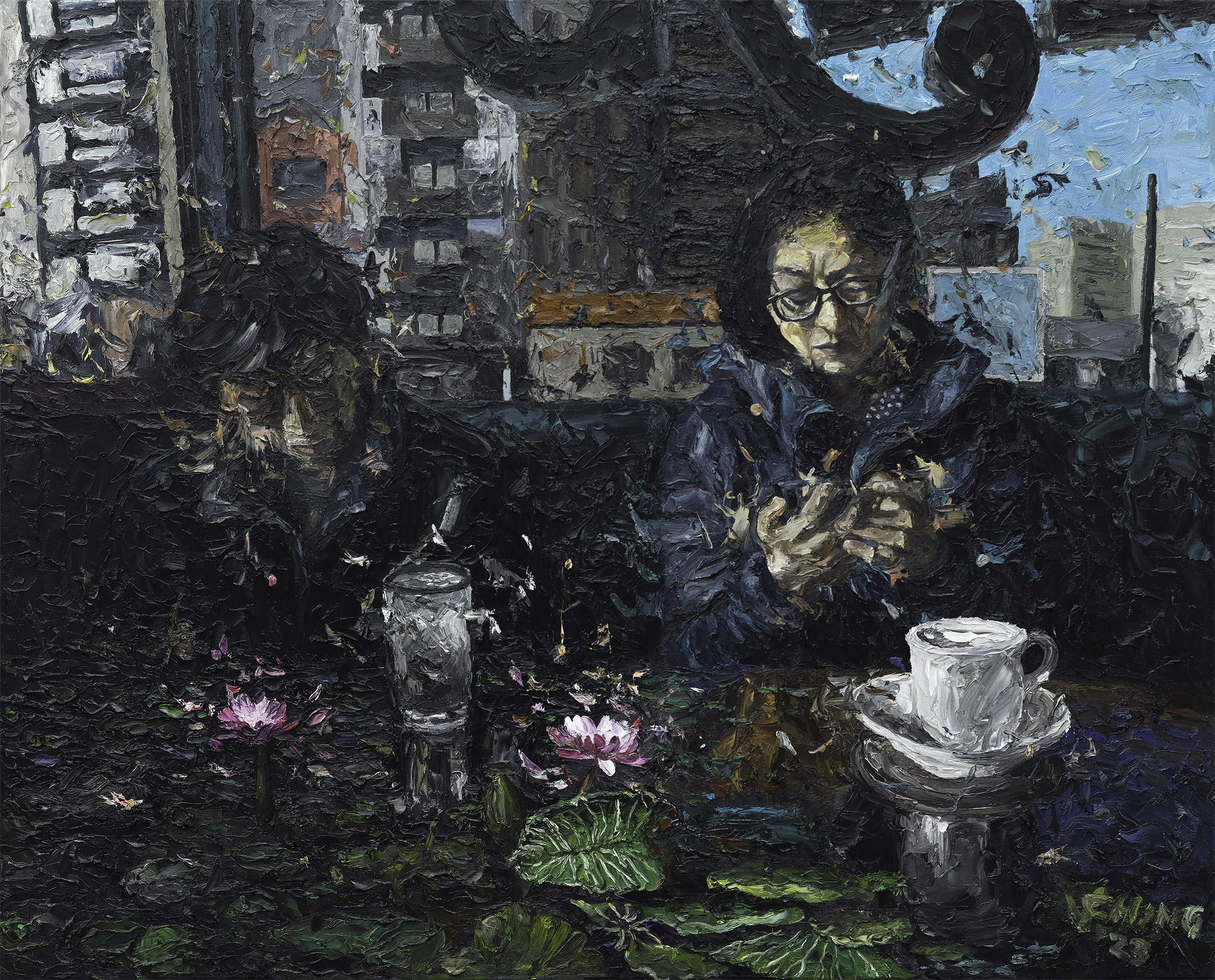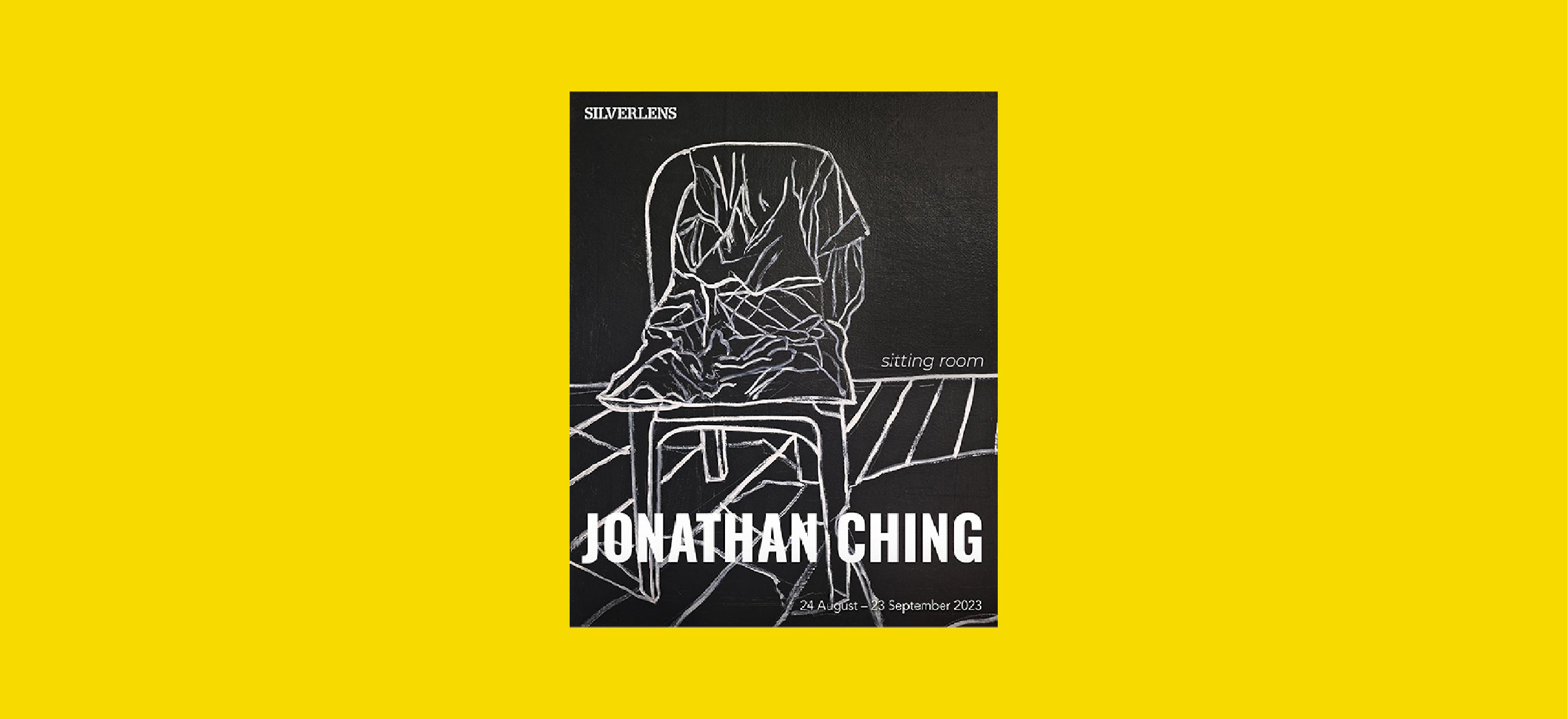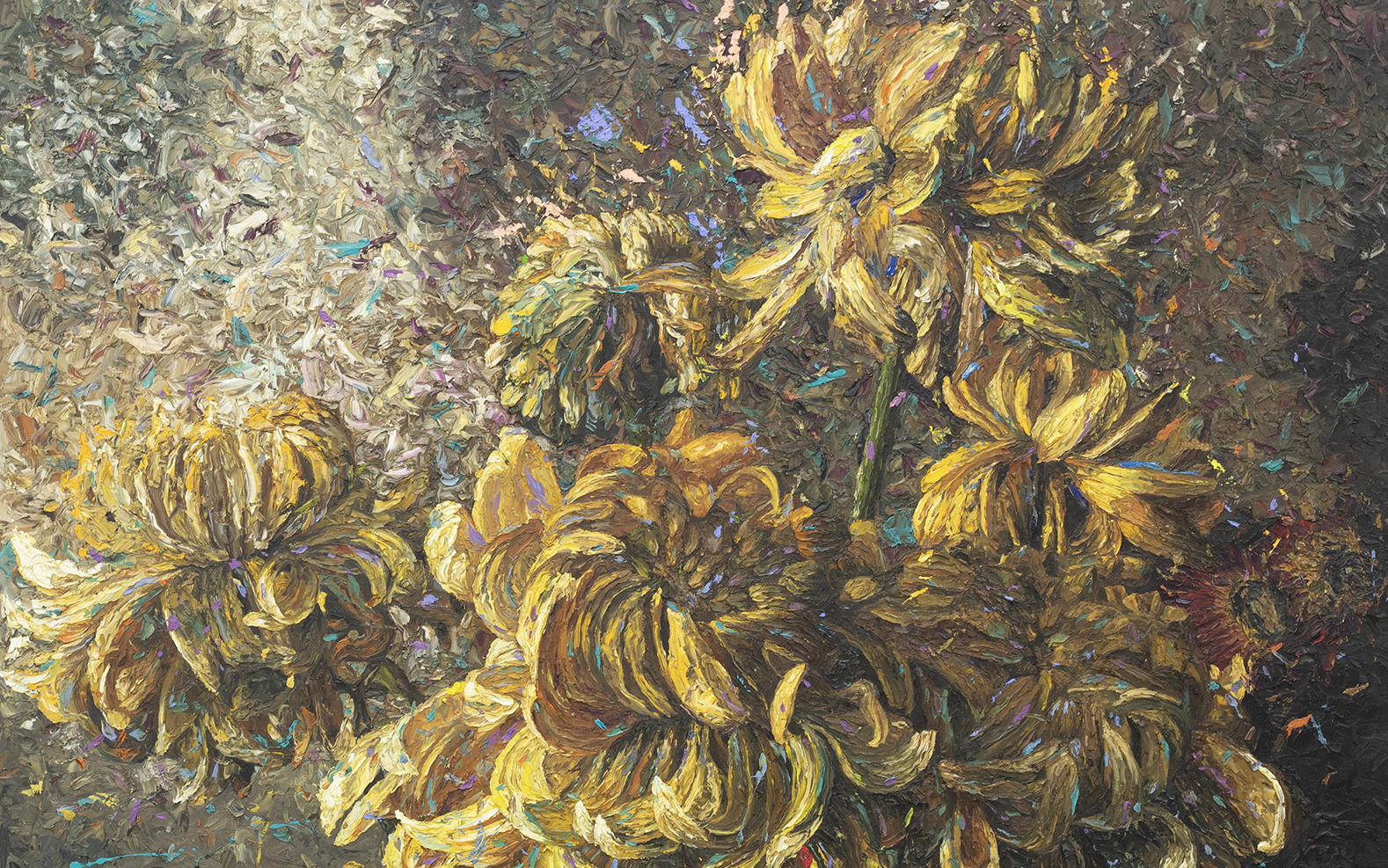
Sitting Room
Jonathan Ching
Silverlens, Manila
About
Silverlens Manila is pleased to present Sitting Room, a solo exhibition by Jonathan Ching. Central to this body of work is the chair as a functional object in space, an index of human relations, and an arbiter of our connection with the world. Civilization is unthinkable without chairs, as it offers a multiplicity of uses, all the while holding and maintaining our bodies at once parallel and perpendicular to—as well as connected to and disengaged from—the ground. Seated figures, we are poised to enjoy a meal, commence work, receive instruction, converse, make a deal, argue for our case, cast judgment. We sit as family members, friends, colleagues, civilians. We understand the influence that the “seat of power” wields, and hence we demand “a seat by the table.” Thrones, ergonomic office chairs, Monoblocs—they are at once radically different and fundamentally the same.
In these paintings, characterized by a furious, coruscating impasto and swirling shifts of the pictorial plane, chairs are structures of leisure—direct invitations to kill time and revive relationships compromised by years-long isolation because of the pandemic. In some works, chairs are temporary resting places for pets and days-old clothes, which indicate life lived outside the domestic space which became refuge and prison during the Covid scourge. A vividness of sensations, the electric connection between two people in close proximity with each other, the charged molecules of air and light in spaces occupied by human presence: These are the elements that endow the works of the artist keen to restore scenes from an old, familiar life.
These acts of restoration are touched by the loneliness of what has come to pass (and what one may argue as something that’s still here): the pandemic, yes, but also the trailing strands of disengagement and isolation. Not one of us have emerged from the global contagion unscathed. We gaze into the near distance or stare at our phones, finding our bearing or appropriate word for the moment. We let the day’s discards accumulate. We face the world with wan smiles and unblinking eyes. Meanwhile, in the paintings, the tables bloom into koi and lotus ponds. Everyday joys are imminent and immanent. These works ask the viewer not only look at their possibility but their full, total, and irrevocable incarnation.
The chairs, then, function in the exhibition as harbors to which we sail from the different points of the day, hold the body stable and steady, so we may share the everyday joys that can assume the form of a cup of coffee or a companionship with another. Chairs offer the titillating prospect of doing nothing or, at the very least, not contributing to the capitalist’s demand of productivity or making “good use” of one’s time. One can be, as one of the works depicts, a contended Buddha on a sofa. Relaxation is paramount and must be pursued as it offers the best vantage point for revelatory wonder, something alluded to by the Japanese poet Shuntaro Tanikawa, who has inspired the artist: “There are things I must tend to/ but I do nothing/ simply sitting enchanted.”
Enchantment may not necessarily be coterminous with urban life—a subject that Jonathan Ching has pursued in much of his works—but the familiar offers its bruised, blemished gems, usually after a period of loss or suffering, when we feel that the dark will not be letting up. These paintings, with their rough-hewn, fervid strokes and resistance against legibility, are held together by the solace of the ordinary: what fragments coheres. And the chairs, in their various iterations, will be there, to be occupied by humans and their affectionate indices, absorbed and committed to what Tanikawa, he of the philosophy of keeping still, calls as the wonder of simply being here.
– Carlomar Arcangel Daoana
Jonathan Ching (b. 1969, Dagupan, Philippines) obtained his Bachelor of Science in Civil Engineering in 1991 before becoming a visual artist. He pursued his artistic interests in 1993 and took up University of the Philippines’ College of Fine Arts – Visual Communication program. He is one of the founding members of the arts collective Surrounded By Water, which successfully established an artist-run space from 1998 to 2004.
Ching has exhibited extensively since his first solo exhibition in 2008 at West Gallery. His works were shown in several solo and group exhibition in the Philippines, Malaysia, Singapore, and Indonesia.
Works
